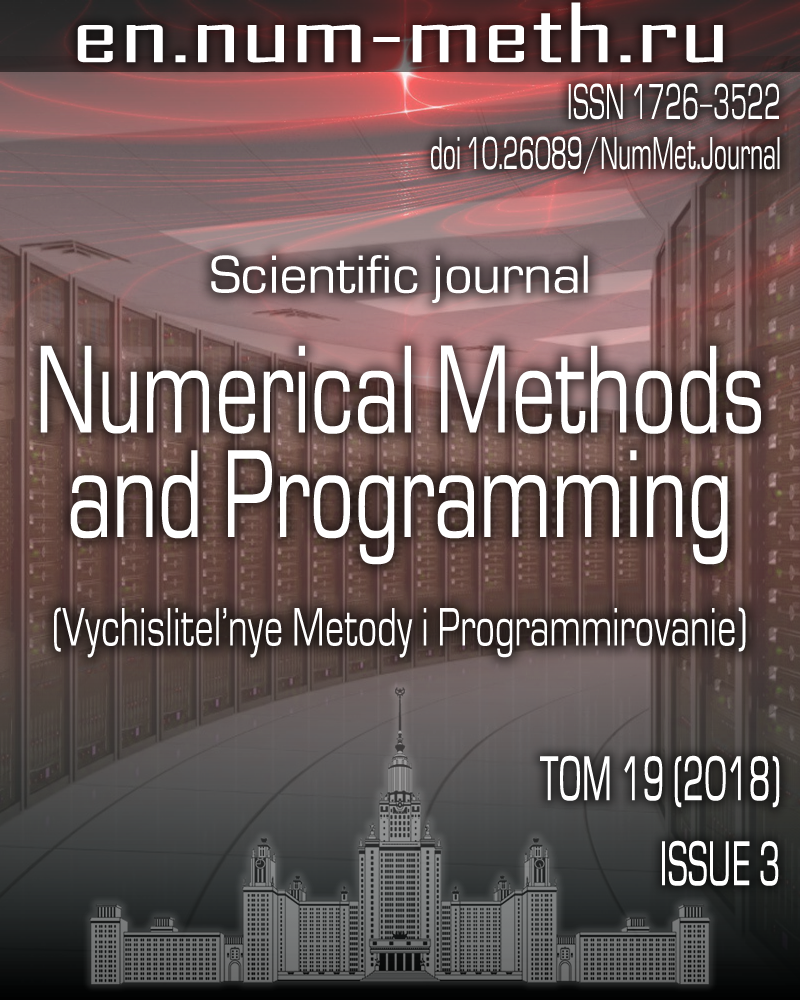DOI: https://doi.org/10.26089/NumMet.v19r326
Statistical modeling of discrete fracture networks using seismic images
Keywords:
discrete fracture network
statistical modeling
seismic images
Abstract
This paper is devoted to modeling of fractured reservoirs. A three-dimensional statistical model of a discrete fracture network is developed. An efficient method to generate the random realizations of the statistical model for an arbitrary computational grid is proposed. The problem of scaling the fracture model using the analysis of seismic images for different grid steps is solved.
Published
2018-12-26
Issue
Section
Section 1. Numerical methods and applications
References
- S. M. Ermakov and G. A. Mikhailov, Statistical Modeling (Nauka, Moscow, 1982) [in Russian].
- E. Bonnet, O. Bour, N. E. Odling, et al., “Scaling of Fracture Systems in Geological Media,” Rev. Geophys. 39 (3), 347-383 (2001).
- O. Bour, P. Davy, C. Darcel, and N. Odling, “A Statistical Scaling Model for Fracture Network Geometry, with Validation on a Multiscale Mapping of a Joint Network (Hornelen Basin, Norway),” J. Geophys. Res. 107 (B6), ETG 4-1-ETG 4-12 (2002).
- C. Darcel, O. Bour, P. Davy, and J. R. de Dreuzy, “Connectivity Properties of Two-Dimensional Fracture Networks with Stochastic Fractal Correlation,” Water Resour. Res. 39 (2003).
doi 10.1029/2002WR001628 - C. Darcel, O. Bour, and P. Davy, “Cross-Correlation between Length and Position in Real Fracture Networks,” Geophys. Res. Lett. 30 (2003).
doi 10.1029/2003GL017174 - J. C. S. Long, J. S. Remer, C. R. Wilson, and P. A. Witherspoon, “Porous Media Equivalents for Networks of Discontinuous Fractures,” Water Resour. Res. 18 (3), 645-658 (1982).
- T. Manzocchi, J. J. Walsh, and W. R. Bailey, “Population Scaling Biases in Map Samples of Power-Law Fault Systems,” J. Struct. Geol. 31 (12), 1612-1626 (2009).
- N. E. Odling, “Scaling and connectivity of Joint Systems in Sandstones from Western Norway,” J. Struct. Geol. 19 (10), 1257-1271 (1997).
- N. E. Odling, P. Gillespie, B. Bourgine, et al., “Variations in Fracture System Geometry and Their Implications for Fluid Flow in Fractures Hydrocarbon Reservoirs,” Petrol. Geosci. 5 (4), 373-384 (1999).
- N. E. Odling, S. D. Harris, and R. J. Knipe, “Permeability Scaling Properties of Fault Damage Zones in Siliclastic Rocks,” J. Struct. Geol. 2004. 26 (9), 1727-1747 (2004).
- J. Öhman and A. Niemi, “Upscaling of Fracture Hydraulics by Means of an Oriented Correlated Stochastic Continuum Model,” Water Resour. Res. 39 (2003).
doi 10.1029/2002WR001776 - S. Schueller, A. Braathen, H. Fossen, and J. Tveranger, “Spatial Distribution of Deformation Bands in Damage Zones of Extensional Faults in Porous Sandstones: Statistical Analysis of Field Data,” J. Struct. Geol. 52, 148-162 (2013).
- N. H. Tran, “Simulated Annealing Technique in Discrete Fracture Network Inversion: Optimizing the Optimization,” Comput. Geosci. 11 (3), 249-260 (2007).
- M. I. Protasov and V. A. Tcheverda, “True Amplitude Elastic Gaussian Beam Imaging of Multicomponent Walkaway Vertical Seismic Profiling Data,” Geophys. Prospect. 60 (6), 1030-1042 (2012).
- N. H. Tran and A. Ravoof, “Coupled Fluid Flow Through Discrete Fracture Network: A Novel Approach,” J. Math. Comput. Simul. 1 (3), 295-299 (2007).
- C. Xu and P. Dowd, “A New Computer Code for Discrete Fracture Network Modelling,” Comput. Geosci. 36 (3), 292-301 (2010).


